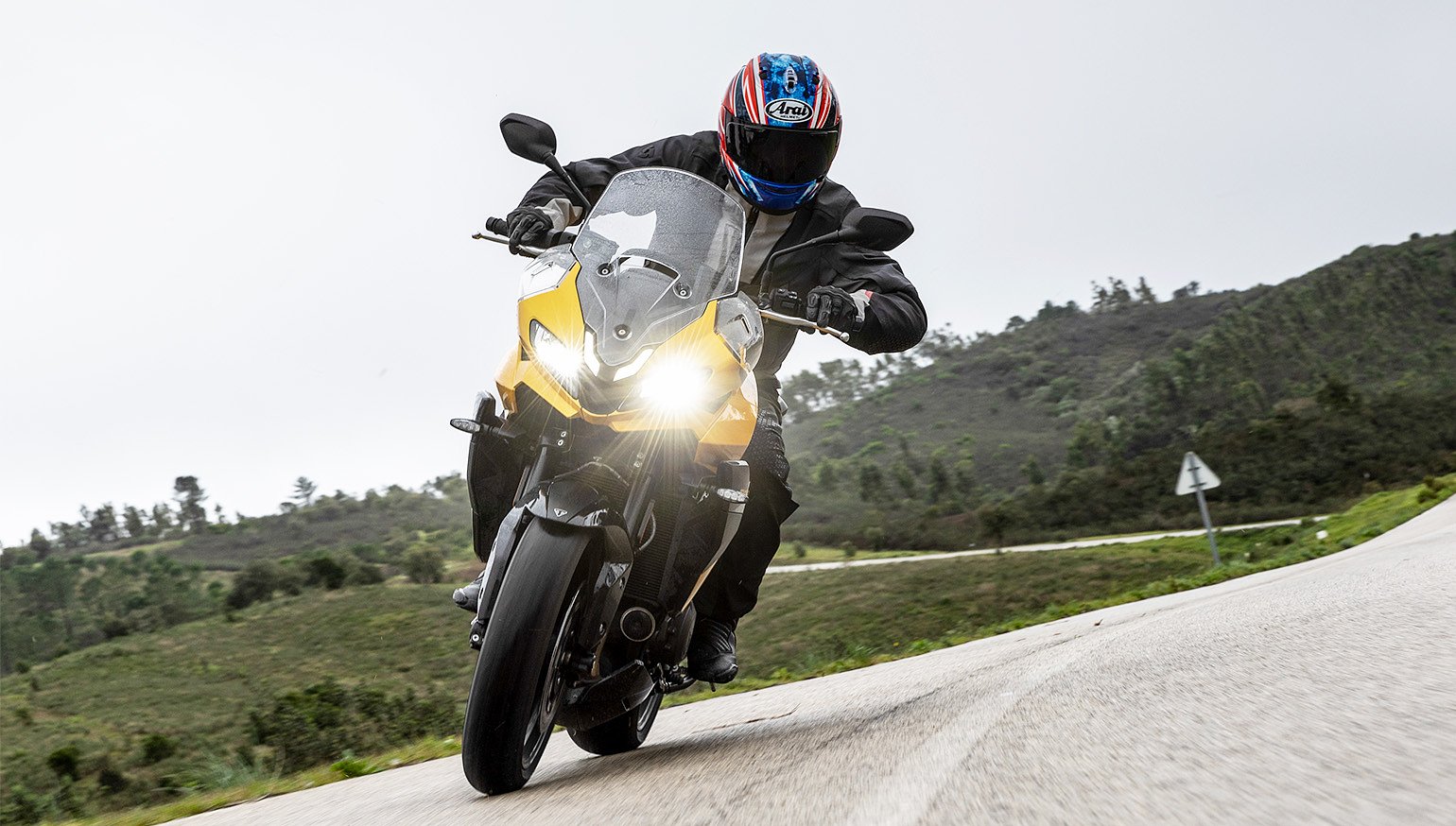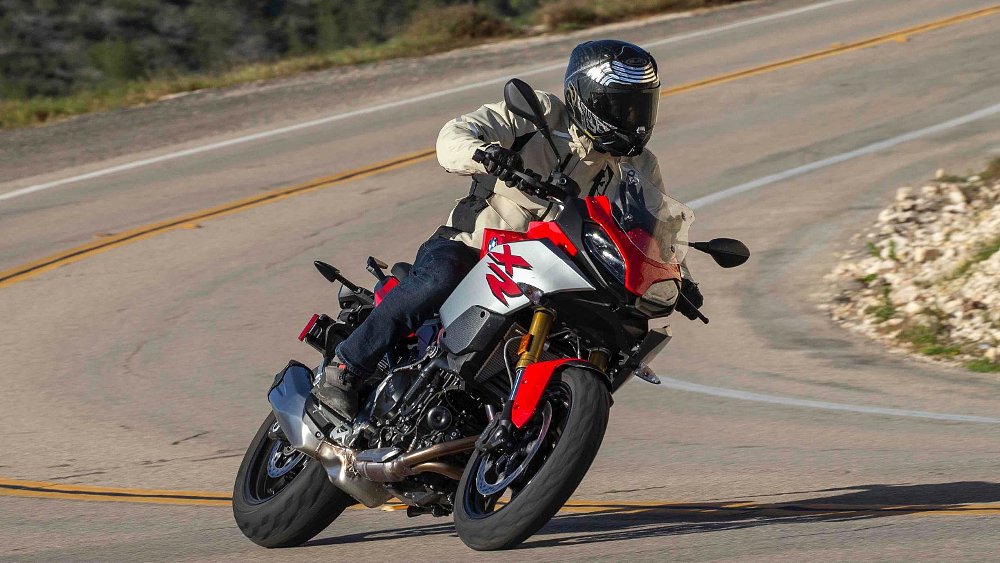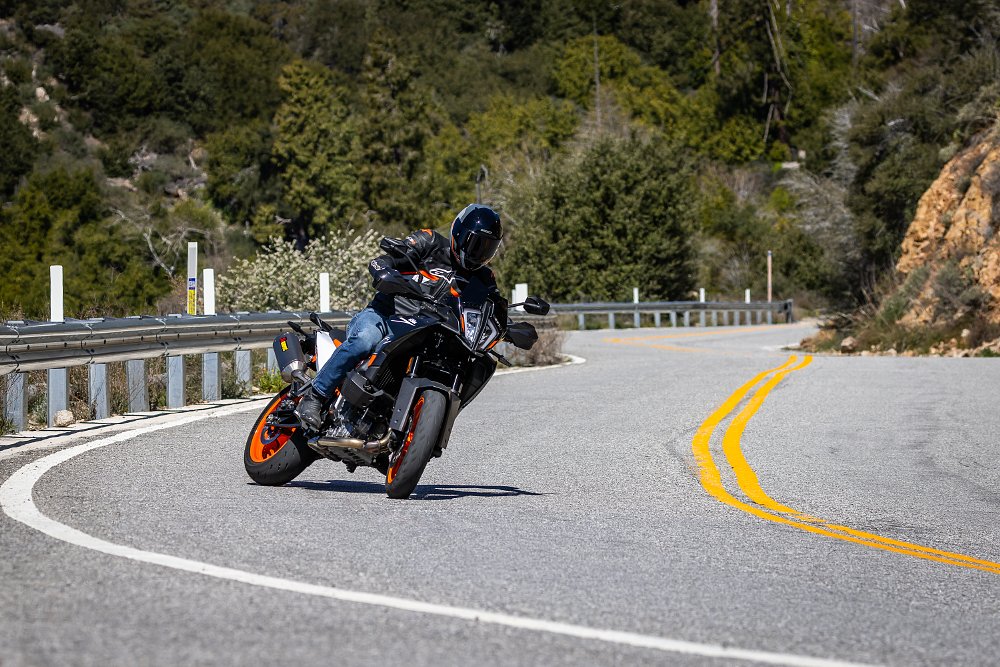I won’t lie. The first time I saw Triumph’s Tiger Sport 800, I was unimpressed.
Hinckley’s head honchos had just presented the all-new (I’m doing air quotes over here) sport-tourer to the international media, complete with a fast-paced, high-gloss trailer to boot. After all the hype, after all the anticipation, all I could muster was, “It looks like the 660.”
Sometimes, seeing a bike in person tempers someone’s initial reaction. Photos can’t capture paint sparkling in the sun. Videos can’t express a bike’s physical presence. The opposite was true for me and the Tiger Sport 800.
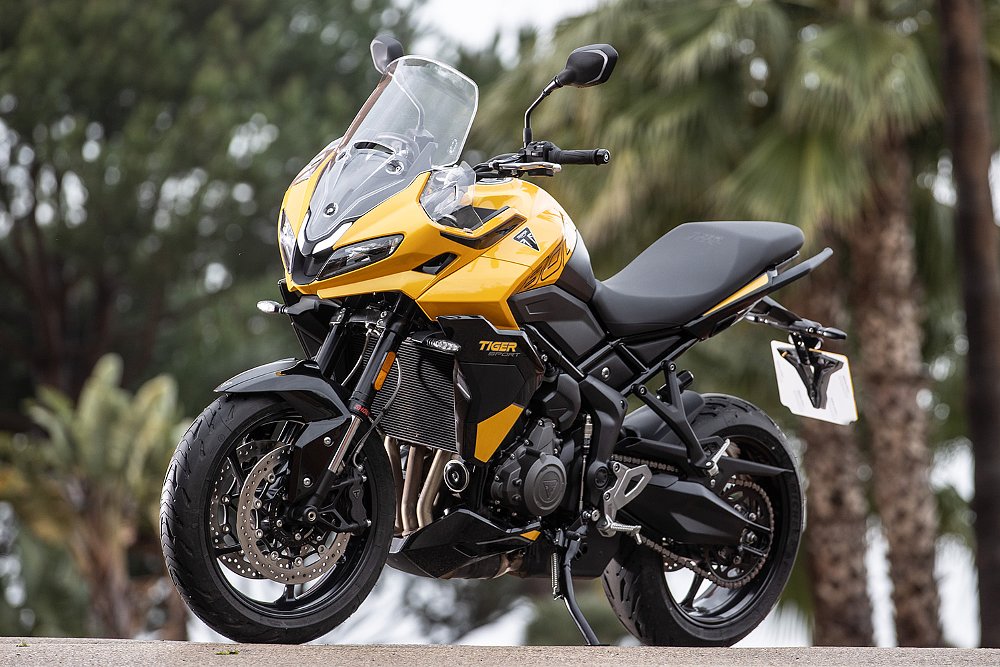
Our first encounter occurred at the model’s global press launch in Vilamoura, Portugal. That face-to-fairing interaction only reinforced my preconceived notion. It was the same size as the Tiger Sport 660. Save for an extra panel here and a few lights there, it shared the same looks, too. “What’s the big difference?” I muttered to myself. “All this fuss for an extra 138 cubic centimeters?”
In a few days’ time, I’d come to learn that I was sorely mistaken.
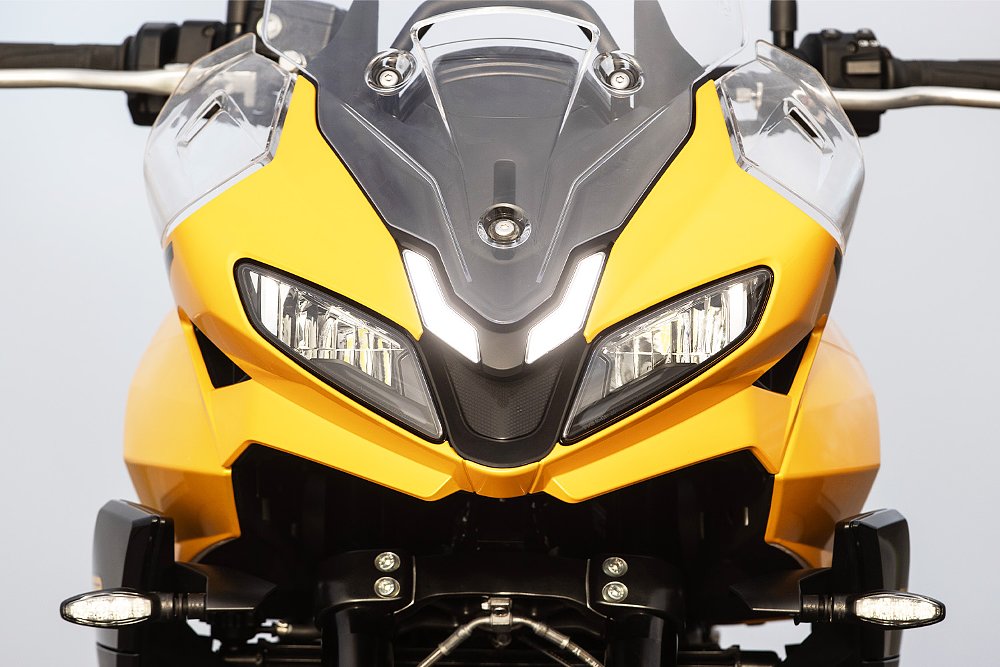
Copycat
In my defense, there are striking similarities between the two Tigers. That’s most apparent when cross-referencing their dimensions. The 660’s wheelbase is 55.8 inches. Its seat height is 32.8 inches. The 800’s is 55.98 inches and 32.9 inches, respectively. Rake and trail figures are practically identical, too. The new Tiger is a copycat.
Those similarities boil down to the structure underlying the TS 800. That’s because the bones of this beast were built upon those of its relative. When designing the 800’s frame, Triumph engineers made conscious efforts to maintain the 660’s geometry. There was just one issue. It had to house a larger engine. That’s where the Tiger Sport 800’s path diverts from the 660's.
The new 798 cc triple shares the same architecture with Triumph’s 765 cc and 660 cc mills. Per Triumph Chief Engineer Stuart Wood, the three powerplants have “the same shape, the same barrel angle, the same shaft centers.” From there, new conrods, pistons, cylinders, and a new crankshaft help achieve the 798 cc displacement. Those aren’t the only changes, either. A model-specific cylinder head now features different valve sizes and new ports.
Whereas the 660 bears one 38 mm throttle body, the 800 flaunts three 44 mm units. It’s those two additional throttle bodies that forced Triumph to reroute the frame’s top rail (see slider image above). The brand did something similar with the Daytona 660, but Mr. Wood reassured me the 800 shares its frame with no other models. In that way, it's a Tiger all its own. A fact that was hard to deny after spending a day in its saddle.
Easy, Tiger
It was an overcast morning along Portugal’s Algarve coast. The winds were swirling, the temps were chill, and the streets were damp. It was one of those mornings where you reach for the snooze button or brew that second cup of coffee — not one where you’re eager to climb aboard a bike. Our group was in no hurry, especially with the forecast calling for higher winds and spotty showers throughout the day.
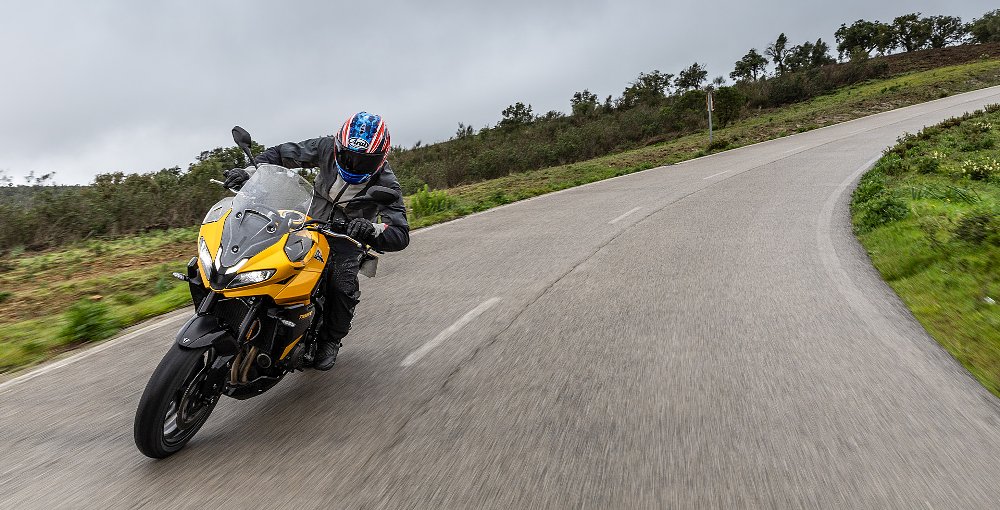
The soggy conditions dictated a patient pace, which also presented the perfect opportunity to test Rain mode. That doesn’t mean it was a lackadaisical experience. Far from it, actually. Even in Rain mode, the triple was surprisingly responsive, with enough bottom-end torque to make me triple-check my settings. It wasn’t the only indicator.
Just 10 minutes later, I spun up the rear tire when accelerating over a wet tar snake. The Michelin lit up, the dash lit up, and I puckered up. Forget an espresso shot. How about 10 mg of adrenaline straight to the heart? Luckily, the hyper-vigilant Rain traction control mode intervened before catastrophe struck.
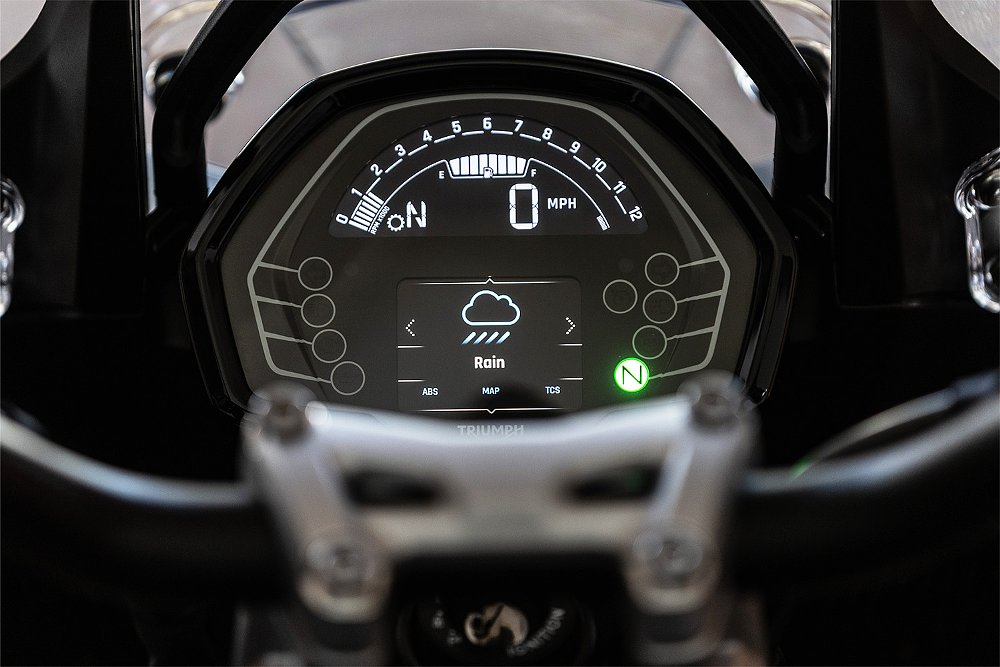
The model not only puts three ride modes (Road, Rain, and Sport) on the table but also includes three traction control modes (again, Road, Rain, and Sport). Switching the ride mode automatically changes throttle response, wheelie control, and TC to the corresponding setting (ABS and overall power output remain unchanged), but users can manually adjust traction control, as well. For instance, you can pair Rain mode with Road TC (not that you’d want to) or Road mode with Sport TC. You can also turn off traction control altogether. Consider it a fielder’s choice.
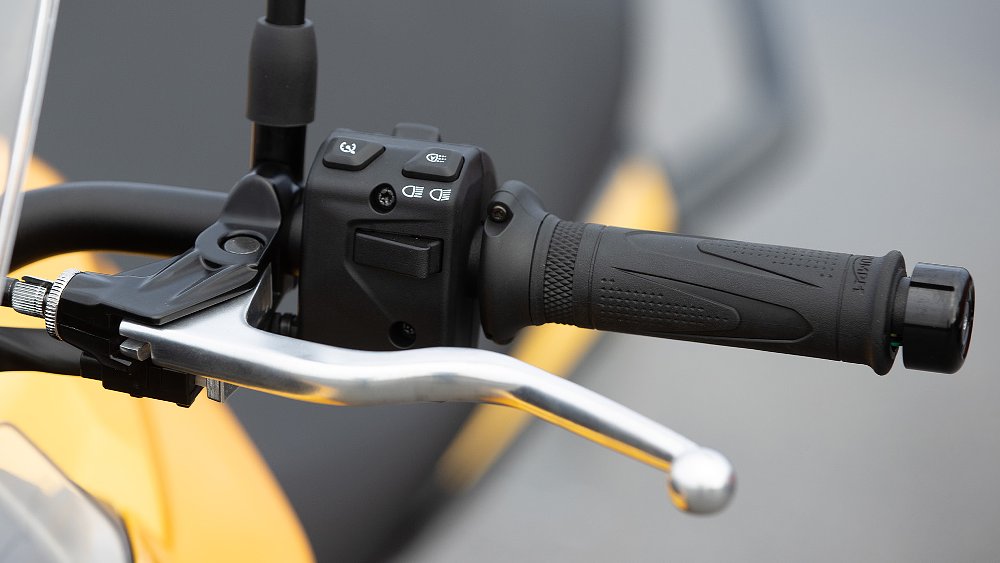
That versatility proved useful later that morning, when drier roads warranted a switch to the Sport riding mode. Still, damp patches remained, which called for Road TC instead. It’s a combination that allowed me to use the sharper throttle response to take full advantage of the engine’s claimed 113 horsepower (at 10,750 rpm) and 61.9 foot-pounds of torque (at 8,500 rpm) without sacrificing safety. Best. Of. Both. Worlds.
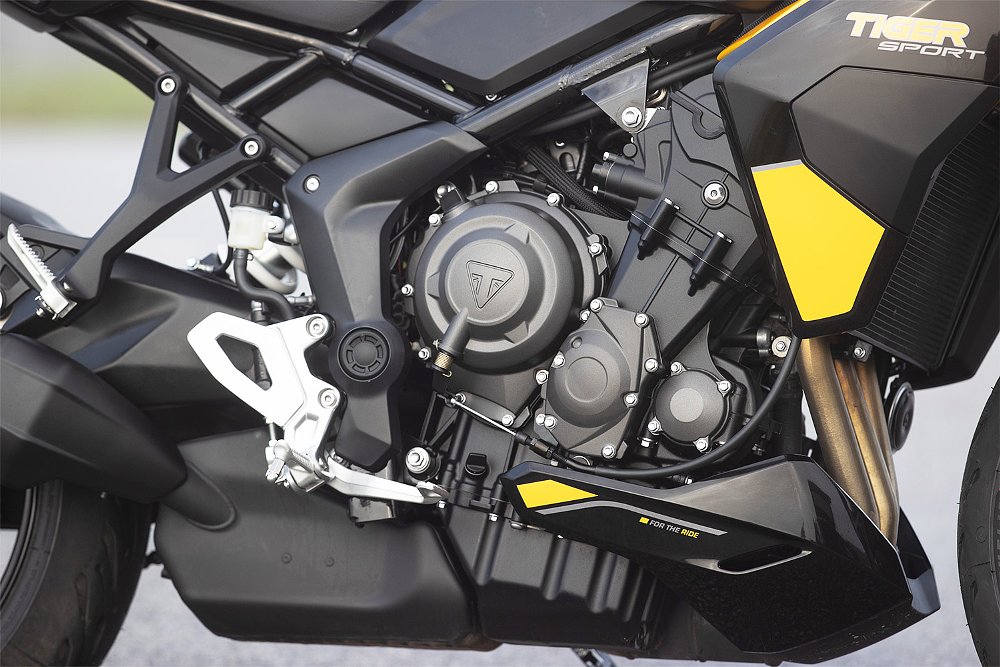
It’s a good thing too, because the 798 cc triple is best experienced in Sport mode. Roll on the throttle and the 800 darts ahead. Better yet, torque is always available. It’s lively but tractable. It’s capable but agreeable. In third gear, it putts through a roundabout at 17 mph without as much as a burble or cough. Away from that same roundabout, it can whip up to 80 mph in a flash. It’s that flexibility that truly differentiates the 800 from the 660.
Sometimes, the engine alone justifies the bike purchase. It’s a question that Zack often ponders on Daily Rider. If I ask myself the same of the Tiger Sport 800, I’d have to answer in the positive. When examined through a sport-touring lens, it’s difficult to fault the triple. It exhibits none of the fueling hiccups or powerband holes so common in today’s motorcycles. It touts 10,000-mile service intervals. Plus, it’s just a good time. Plain and simple. The chassis only complements that engaging engine.
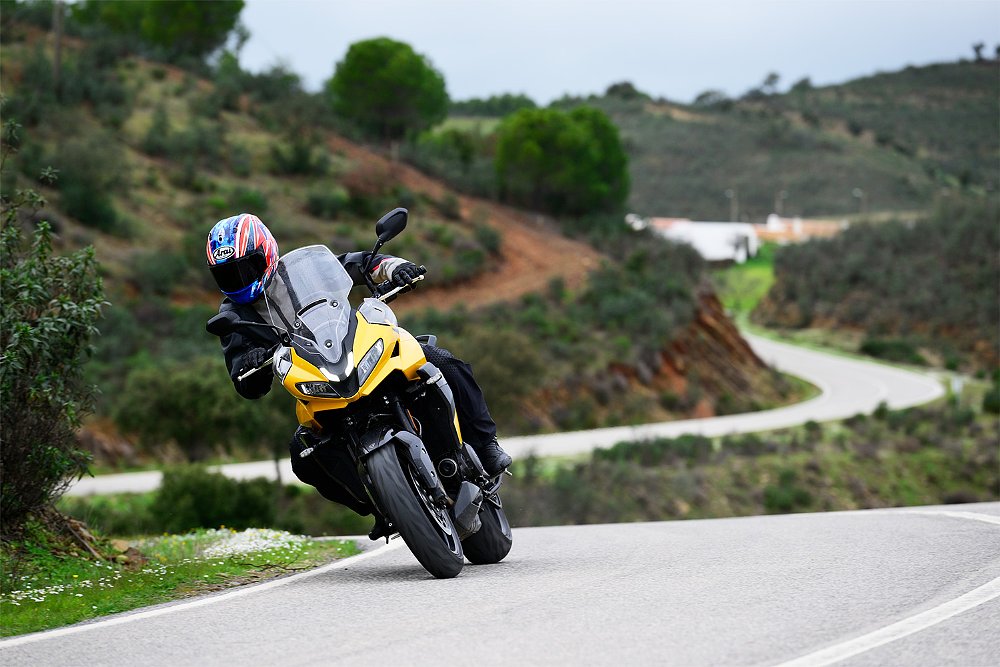
Cat-like reflexes
At a glance, the Tiger Sport 800 and Tiger Sport 660 seemingly share the same suspension. They both boast a 41 mm Showa front end. Their monoshocks hail from the Japanese brand, too. Even the front- and rear-wheel travel remain consistent across the two, at 5.9 inches. Take a deeper look and you’ll see that the 800’s cartridge-equipped fork offers rebound damping adjustment on the right leg and compression damping clickers on the left. The rear shock also features rebound adjustments, but it’s the remote preload adjuster that eases frequent payload payload changes.
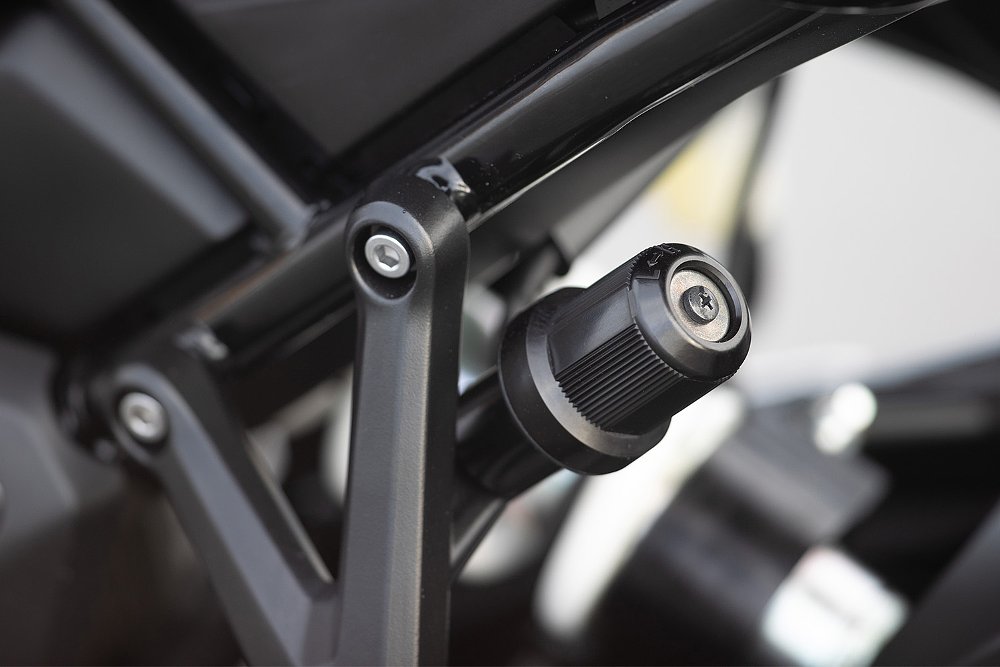
It’s important I mention the adjustability of each suspender because I didn’t touch them once throughout the day. In fact, practically none of my colleagues fiddled with the base settings, and we spanned the spectrum from bony to burly. The Tiger was just that good right out of the box. Neither potholes nor speed humps could shake its balanced nature. It simply rolled into the bump, soaked up the hit, and carried on with its business. That balanced nature was just as prevalent when attacking corners.
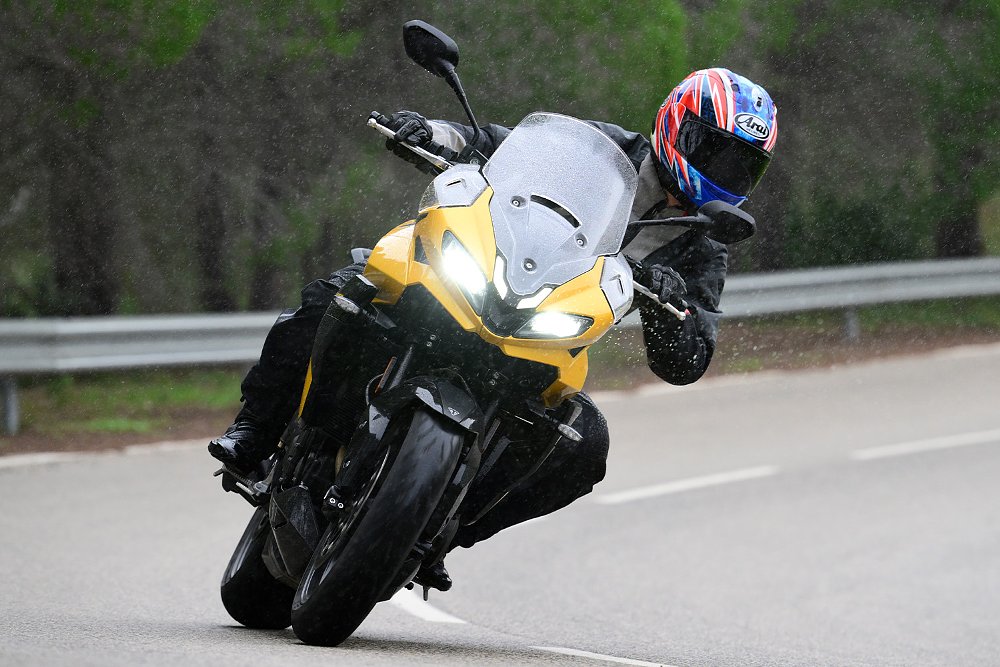
It owes much of that to the suspension, which finds a happy medium between comfort and control. Over rough roads, it remains composed. Under braking, it stays stout. Again, it’s balanced. Part of that also comes down to the J.Juan brakes and Michelin Road 5 tires, two components the 800 doesn't share with the 660. The former felt taut at the lever, with no signs of fade and with stopping power galore. The latter licked up water in the wet and yielded loads of lean in the dry, for road-sticking grip in nearly all situations.
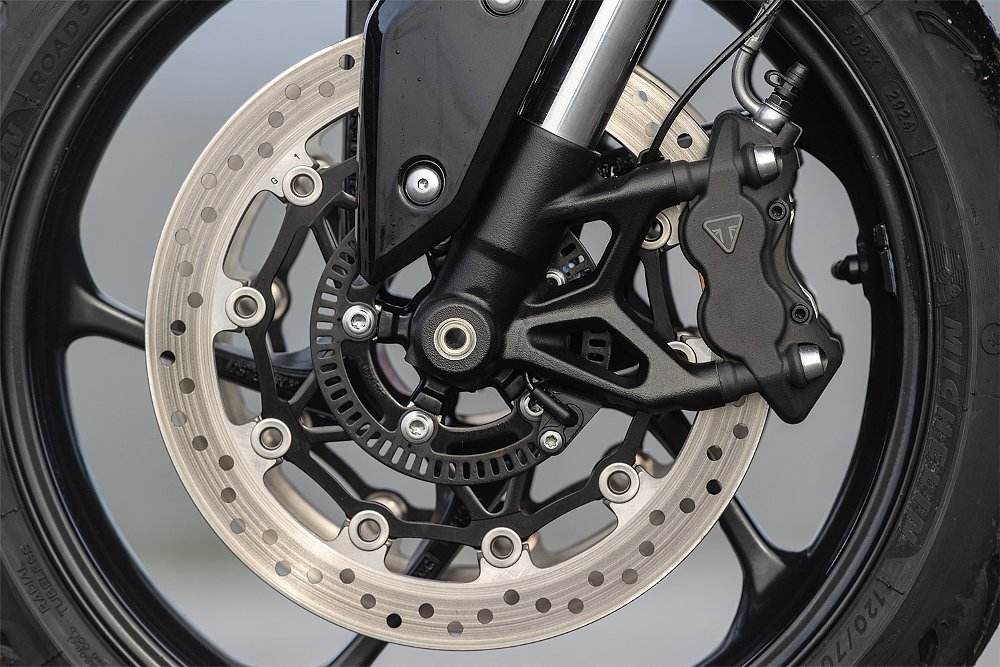
Railing through a series of corners is where the Tiger Sport’s quickshifter truly shines. Up and downshifts are direct yet smooth, delivering nearly seamless gear transitions whether revs are low or high. Our group was quite vocal about the unit’s performance, but it’s what I’ve come to expect from the British brand.
I won’t dwell on the 800’s ergonomics because they’re reminiscent of the Tiger Sport 660’s. That’s to say it’s neutral, with abundant legroom and fore-to-aft seat space. It’s one of many things las Tigres Deportes share now that the 660 gains cruise control, cornering ABS, lean-sensitive traction control, a quickshifter, and a Sport ride mode in 2025. Which still begs the question: is the Tiger Sport 800 different enough?
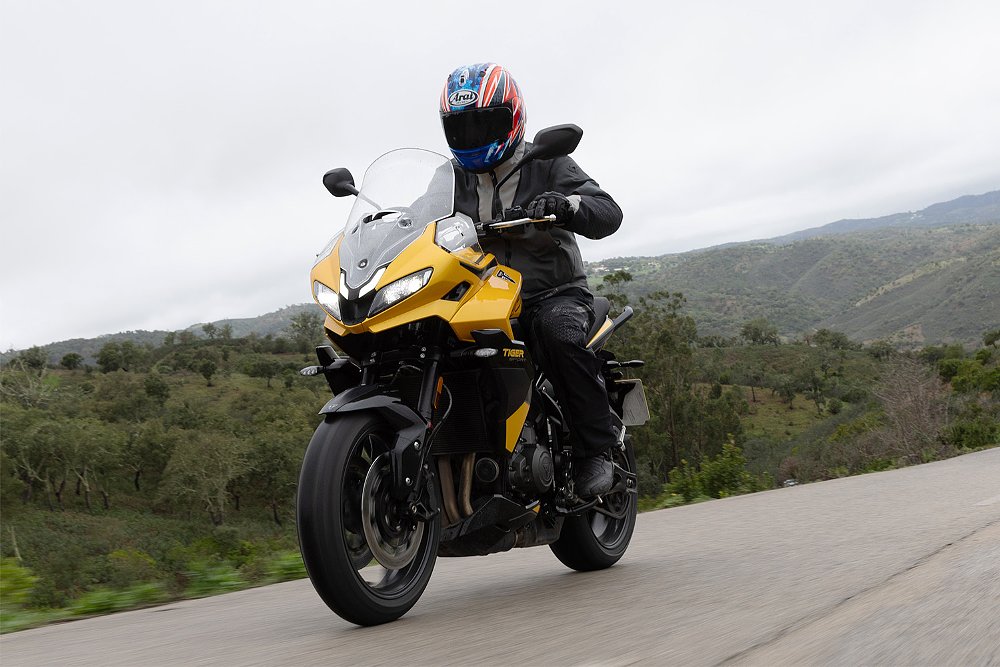
Earning its stripes
With an MSRP of $12,495, the Tiger Sport 800 joins a class that includes BMW’s F 900 XR, Yamaha’s Tracer 9 (reduced to $12,599 in 2025), and KTM’s 890 SMT. However, it’s still engaged in a sibling rivalry with the Tiger Sport 660, especially given the two models’ similarities. Yes, the Tiger Sport 660 can do everything the 800 can do. They’re both competent sport-tourers, whether that means logging miles or dashing up a mountain road. The 800 just does everything that much better, from acceleration to braking, from cruising to handling.
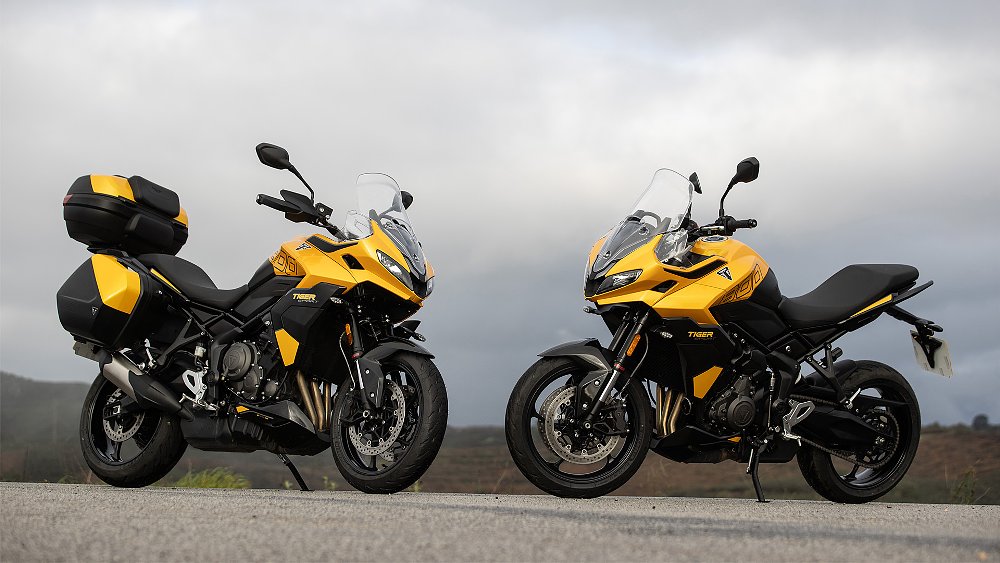
My mama said it's what's inside that counts, and that’s where the Tiger Sport 800 makes the difference. Its engine commands the same space but produces 42% more power (claimed). Its suspension still bears Showa stickers but it offers even more control. It may resemble the Tiger Sport 660 on the outside, but it's far different on the inside. Now that I’ve clocked nearly 145 miles and weathered the rain with the Tiger Sport 800, I won’t lie, I’m impressed.
| 2025 Triumph Tiger Sport 800 | |
|---|---|
| Price | $12,870 (as tested) |
| Engine | 798 cc, liquid-cooled, 12-valve, inline triple |
|
Transmission, final drive |
Six-speed, chain |
| Claimed horsepower | 113 @ 10,750 rpm |
| Claimed torque | 61.9 foot-pounds @ 8,500 rpm |
| Frame | Tubular steel perimeter |
| Front suspension | Showa separate function 41 mm inverted fork, adjustable for compression and rebound damping; 5.9 inches of travel |
| Rear suspension | Showa shock, adjustable for rebound damping and remote preload adjuster; 5.9 inches of travel |
| Front brake | Dual J.Juan four-piston calipers, 310 mm discs with ABS |
| Rear brake | J.Juan single-piston caliper, 255 mm disc with ABS |
| Rake, trail | 23.8 degrees, 3.9 inches |
| Wheelbase | 55.98 inches |
| Seat height | 32.9 inches |
| Fuel capacity | 4.92 gallons |
| Tires | Michelin Road 5, 120/70R17 front, 180/55R17 rear |
| Claimed weight | 471.8 pounds (wet) |
| Available | March 2025 |
| Warranty | 24 months |
| More info | triumphmotorcycles.com |




